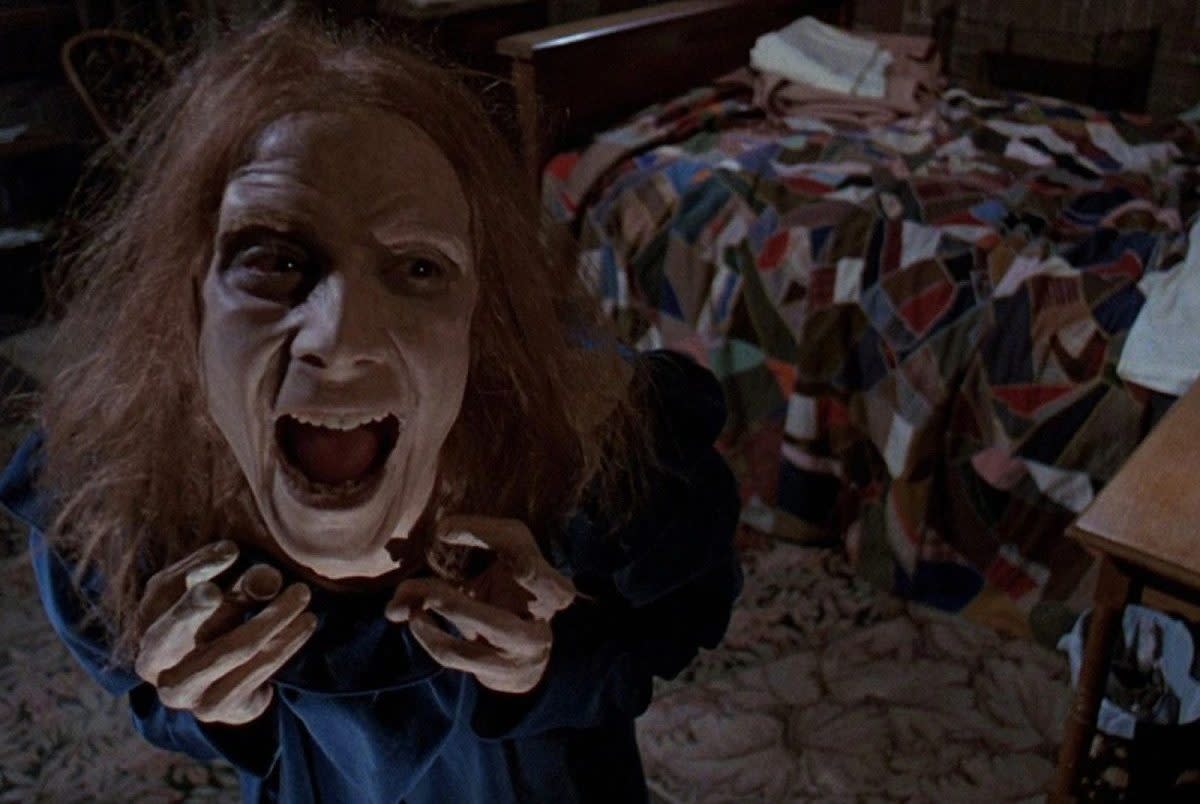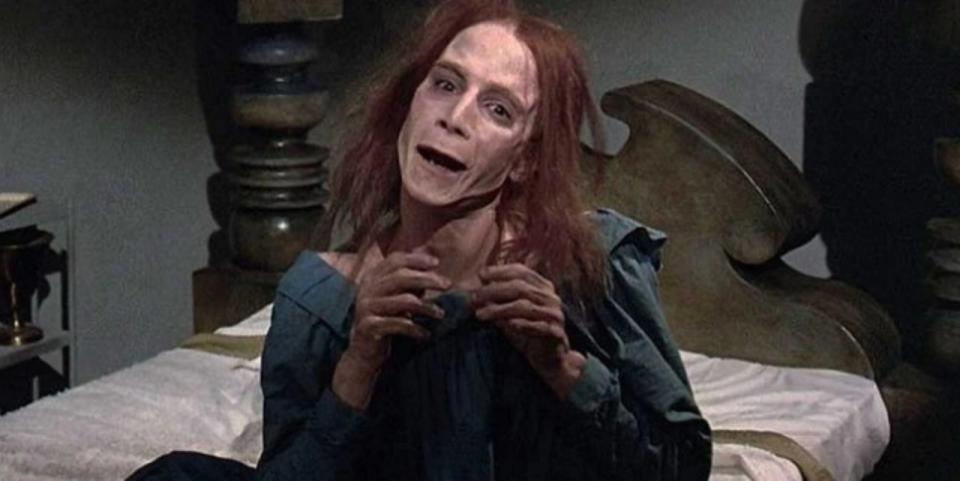When Your Own Body Is the Big Screen Monster

- Oops!Something went wrong.Please try again later.

It’s hard to forget one of the first disabled women I ever saw on the big screen. In the 1989 adaptation of Stephen King’s novel, “Pet Sematary,” Zelda (Andrew Hubatsek), the deceased sister of Rachel Creed (Denise Crosby), suffers from spinal meningitis. She is seen predominately in flashbacks, and Zelda becomes a literal and metaphorical ghost who haunts Rachel throughout the film. Zelda is skeletal, her spine deformed.
More from IndieWire
To see Zelda in the film is to see a monster.
Growing up with a bone disability, Zelda utterly terrified me, because I had no other disabled women, on screens large or small or elsewhere, to compare her to. To me, I wasn’t just scared of Zelda because the movie portrayed her as a villain, I was scared because I worried that this is what disabled women ended up like. That this is what I was going to end up like.
Zelda is the example I most frequently point to, but the history of disabled women in horror has more Zeldas than most people realize. Unlike disabled men in horror, where characters from Frankenstein’s monster to the Creature from the Black Lagoon are presented as tragic figures, female characters have little sense of personal tragedy afforded to them, are often portrayed only as victims, and are typically reliant on how they look to stir much emotion (good or bad, from both fellow characters and the audience itself).
The majority of disabled women in horror are wheelchair users, like Joan Crawford in 1962’s “What Ever Happened to Baby Jane?” Crawford is the only physically disabled character in the film, and she is frequently victimized and tortured on all sides. Even her makeup is dowdy and unforgiving. Despite her appearance and treatment, she’s still the able-bodied Crawford sitting in a wheelchair.
Much of disabled representation in cinema, regardless of genre, limits disabled characters to make able-bodied audiences comfortable. So, it’s presumed that an able-bodied audience will be turned off by anyone who looks “too” disabled. Hence, placing Crawford in a wheelchair is more aesthetically pleasing than showing a disabled person who is smaller statured or has a barrel ribcage. However, like our constant discussion of how overly skinny models craft impossible body standards, these same movies remind disabled audiences that if you can’t hide your disability, no one wants to see it at all.
Other women who are presented with disabilities in horror are portrayed simply as beautiful victims, like Audrey Hepburn in 1964’s “Wait Until Dark” (her character is blind), Kate Siegel in 2016’s “Hush” (her character cannot speak or hear), or Fiona Dourif in the “Chucky” series (her character is a wheelchair user). (Some strides, however, must be recognized, particularly when it comes to Dourif’s portrayal of Nica Pierce, which showcases a disabled character with a fully accessible living situation who is also presented as a sexually autonomous character).
These women are in often peril (and can likely be counted among the genre’s many final girls), and they each have an inner strength and ingenuity that makes them worth championing. And yet, at issue is that each actress, being non-disabled and utterly gorgeous, are playing roles that continue to situate disabled women who don’t conform to those beauty standards are non-existent or abnormal. Or, in more simple cinematic parlance: they’re not worth rooting for.

Paramount Pictures/Screenshot
If your body doesn’t conform to those sorts of standards, you’re left with Zelda. Perhaps, however, that isn’t all bad. Something interesting happened to me a few years ago, and in writing about disability, the horror world, and “Pet Sematary” in particular, I started to understand Zelda in a different way.
Let’s go back to director Mary Lambert’s movie, specifically. In the film, Rachel talks of the night Zelda died and how part of her grief stems from knowing that she wanted her sister to die “not just so that she wouldn’t feel pain, but that we wouldn’t feel pain.” Ableism tends to stand out to those with disabilities, but it still took me years to realize that Rachel Creed is indeed ableist. Yes, Zelda’s disability is terrible, but the movie isn’t told from her perspective, so Rachel’s take on her death makes some leaps for her sister. Later, she even admits that she was laughing after the fact. Rachel Creed: villain.
Fast-forward twenty years to the 2019 remake of “Pet Sematary,” which manages to treat Zelda in even worse fashion. In Kevin Kölsch and Dennis Widmyer’s feature, she becomes a CGI-crafted monstrosity, so excessive in her horror that it’s laughable. On top of that, the movie doesn’t let her go quietly into that good night, but kills her off by getting caught in a laundry chute. If Rachel Creed wasn’t laughing about that, then no doubt the audience was (and in the theater where I saw this movie, they were).
Still, disability representation in horror is getting better, more so than any other genre. As mentioned before, the likes of “Hush” and the last two “Chucky” features prioritize disabled women, women who are disabled from birth, and present them as resourceful and resilient. In the case of “Chucky,” Nica’s sexuality is a game-changer for disabled women, who often don’t see themselves presented as desirable on-screen. Both the growing “A Quiet Place” franchise and recent offering “Run” give disabled actresses a chance to lead their movies. Still, these movies prioritize white women, as well as those with the ability to “pass” and/or be aesthetically conventional on-screen. It’s not perfect, but it’s a helluva lot better.
Even now, nearly a century on from horror’s most seminal portrayal of disabled characters (for better and for worse), to watch a disabled character in the genre is too often to see the most overt forms of disabled representation on display. Disabled characters, particularly women, are still “monsters,” and until Hollywood decides that not every disabled character is a stunning beauty queen, perhaps it’s time we celebrated the monstrous for what they can give us, far beyond the scares.
Best of IndieWire
New Movies: Release Calendar for October 7, Plus Where to Watch the Latest Films
Martin Scorsese's Favorite Movies: 50 Films the Director Wants You to See
Sign up for Indiewire's Newsletter. For the latest news, follow us on Facebook, Twitter, and Instagram.

